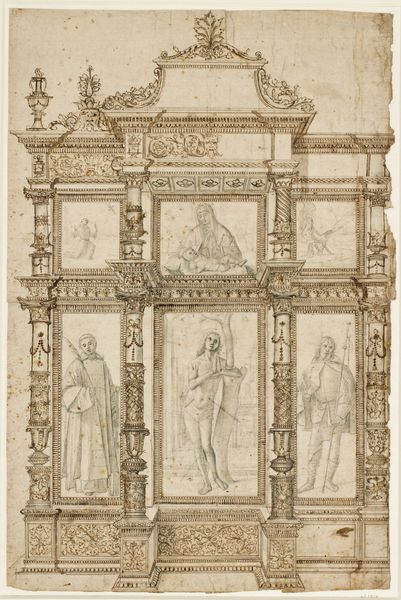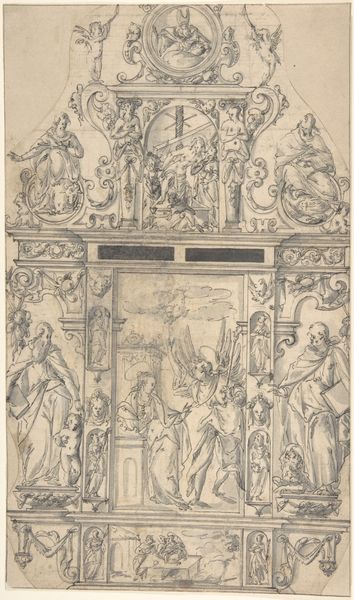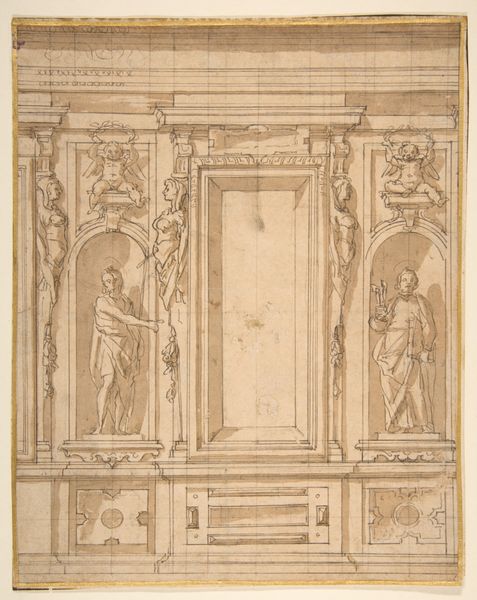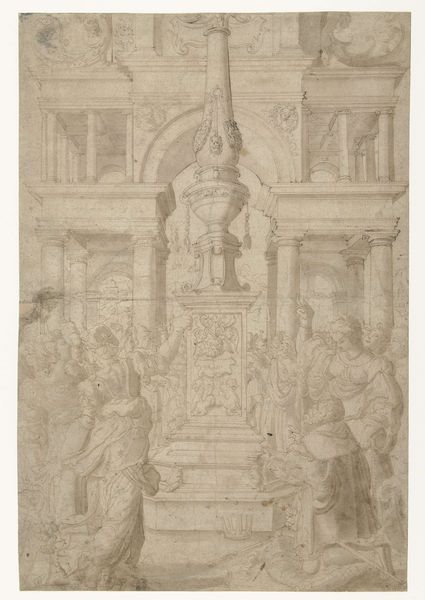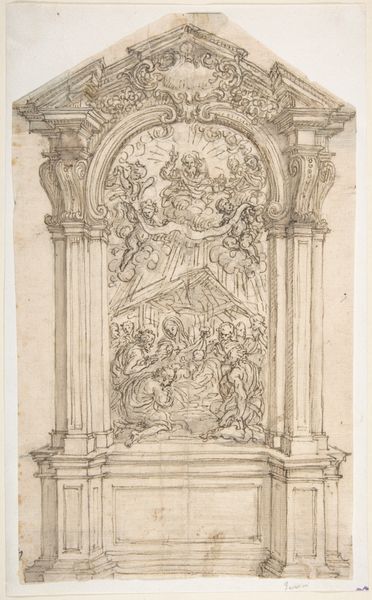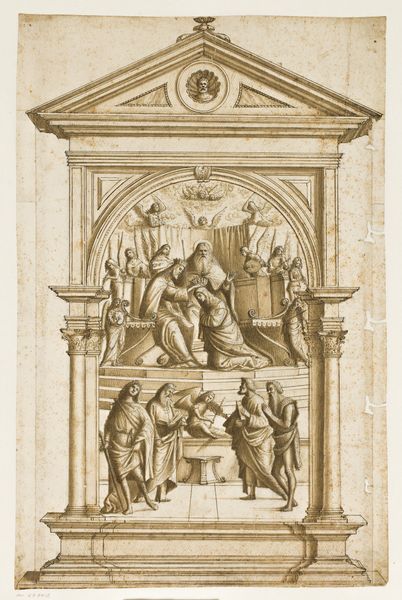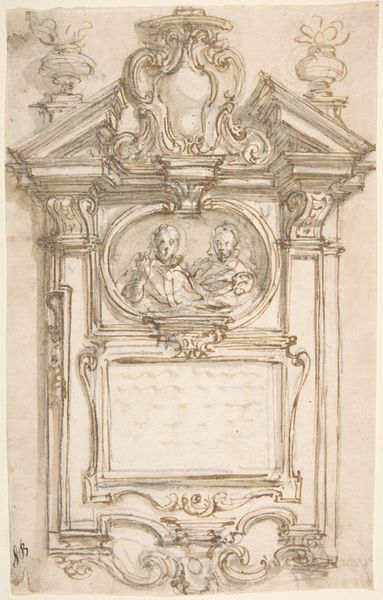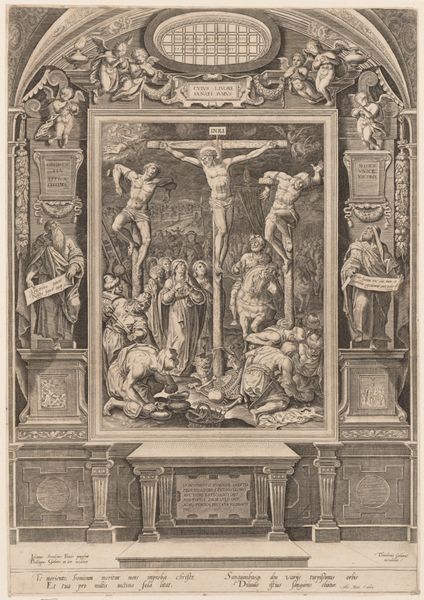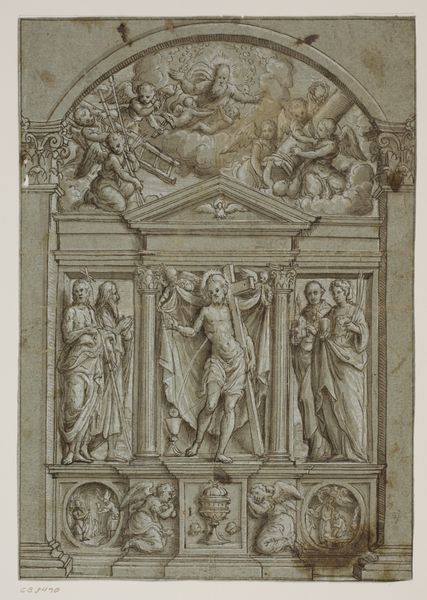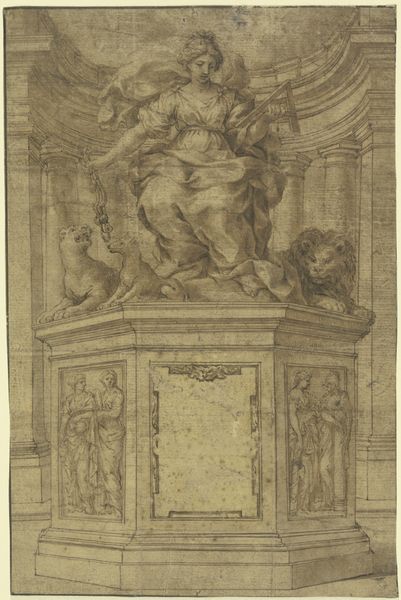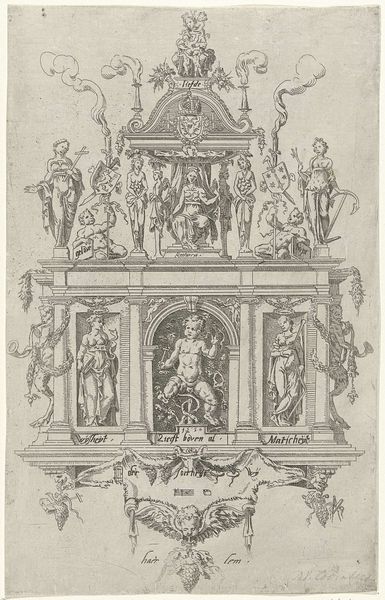
Design for an Altar with the Virgin of the Immaculate Conception in the Center 1600 - 1700
drawing, print, etching, architecture
drawing
medieval
baroque
etching
etching
11_renaissance
history-painting
architecture
Dimensions: 9-13/16 x 6-3/4 in. (24.9 x 17.1 cm)
Copyright: Public Domain
Curator: This drawing, titled "Design for an Altar with the Virgin of the Immaculate Conception in the Center," comes to us from an anonymous hand, dating roughly from 1600 to 1700. What strikes you first about it? Editor: There's a hushed solemnity about it. The monochromatic sepia tones give it a venerable, almost spectral feel. It's meticulously rendered, but retains a fragile, tentative quality, considering its architectural subject matter. Curator: Absolutely. Knowing it's a design for an altar enriches the experience. Notice how the Virgin occupies the central panel. Conceptually, where do you place such representations of women in their socio-political context? Editor: Her positioning, quite literally elevated, speaks to her symbolic weight, though, ironically, it’s still an identity mediated through religious and patriarchal structures. The surrounding figures, framed within baroque exuberance, echo certain motifs through time—repetition and placement are a crucial aspect of spiritual iconography. Curator: The symmetry here emphasizes that. It also places the Virgin as the primary figure—a vessel, you could say. Can we see it, perhaps, as a potent statement on gendered expectations of purity and submission in a very specific, culturally sanctioned manner? Editor: Perhaps. What truly intrigues me is the constant tension between its design—these arches and embellishments speak volumes of a bygone aesthetic ideal—and its ultimate purpose. We cannot remove this from ritual—how these symbols serve emotional, spiritual needs. The viewer at worship absorbs all this and the power dynamic is palpable. Curator: It invites complex interpretations that resonate today. And it emphasizes the Virgin's role as intercessor, an appeal embedded within her very image, her representation. It serves as a focal point for religious and also, potentially, artistic interpretation. Editor: Absolutely. Whether read as devotion, architectural plan, or historical document, the piece creates connections between different eras. Curator: A conversation, if you will, across centuries of faith, art, and power dynamics. Editor: Indeed—it gives us much to consider.
Comments
No comments
Be the first to comment and join the conversation on the ultimate creative platform.
